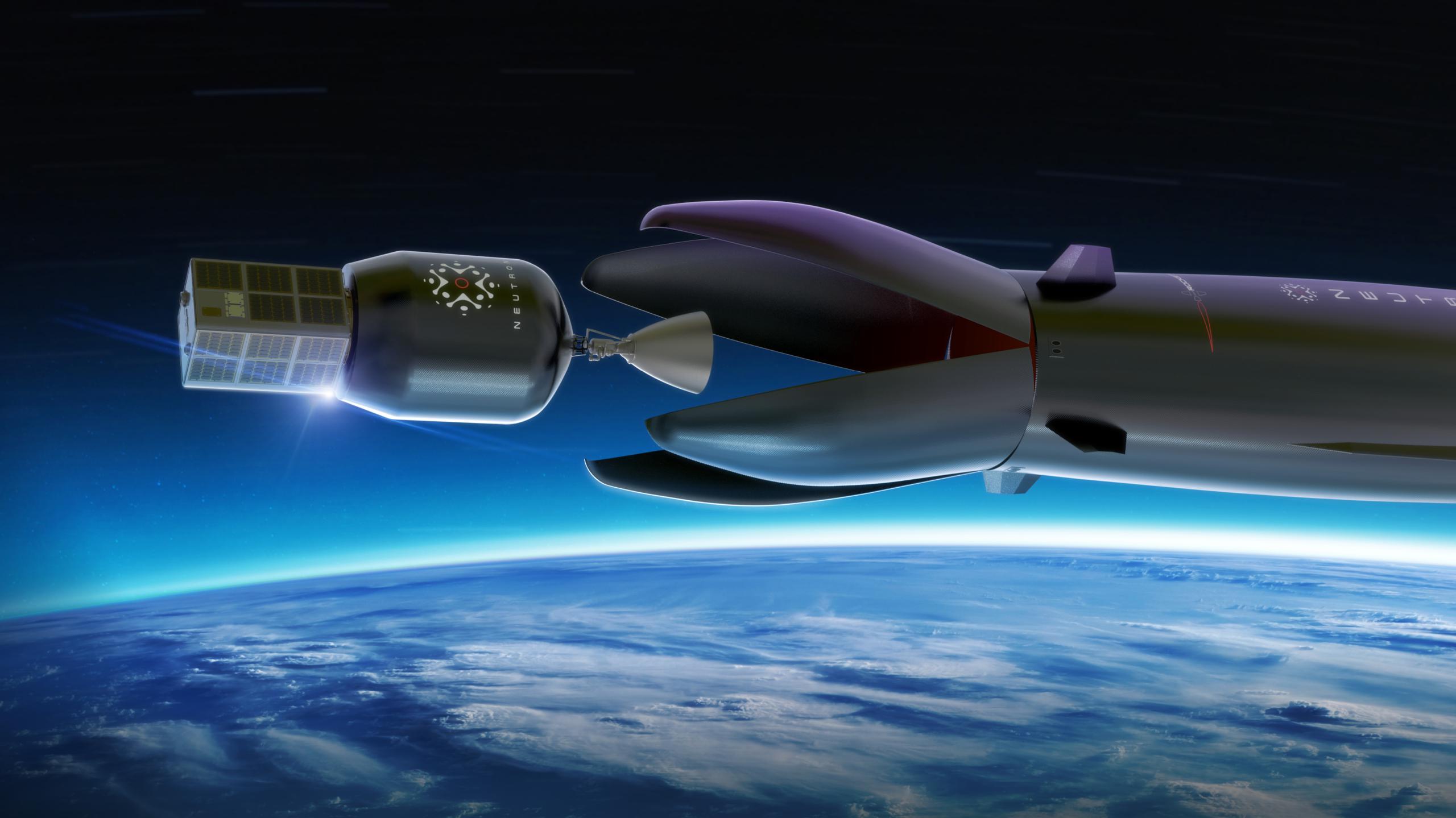
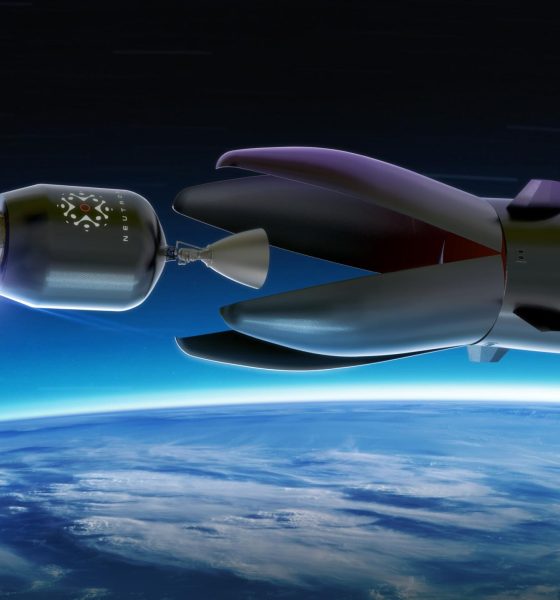
News
Rocket Lab to build reusable Neutron rocket factory and launch pad in Virginia
Rocket Lab has selected Virginian island to host the first launch site, factory, and landing pad for its next-generation Neutron rocket.
In a move reminiscent of SpaceX’s Starbase Starship factory and launch sites, Rocket Lab plans to build and launch its Neutron rocket in more or less adjacent facilities within NASA’s Wallops Flight Facility and Mid-Atlantic Regional Spaceport on Virginia’s Eastern Shore. Rocket Lab estimates that this new facility will bring over 250 jobs to the area, including engineers, technicians, and support staff that will be working at the complex.
The 250,000-square-foot facility will support Neutron production, assembly, and integration within spitting distance of its first orbital launch site. The site will be Rocket Lab’s third main rocket development and production facility, joining a small factory and headquarters in Huntington Beach, California, and a more substantial Auckland, New Zealand factory. Rocket Lab’s Auckland factory is dedicated to manufacturing the company’s smaller Electron rocket, which (for now) is exclusively launched out of pads located on the north island’s Māhia Peninsula. Neutron’s Virginia manufacturing complex will be in close proximity to Rocket Lab’s lone American Electron launch pad (LC-2), which is also located at Wallops.
However, Electron is merely Rocket Lab’s first step into orbital rocketry Neutron, Rocket Lab’s next rocket, will be capable of launching at least 8 tons (~17,600 lb) into low Earth orbit (LEO). Borrowing heavily from experience with Electron, Neutron will be the first medium-lift rocket made primarily of carbon fiber composites.
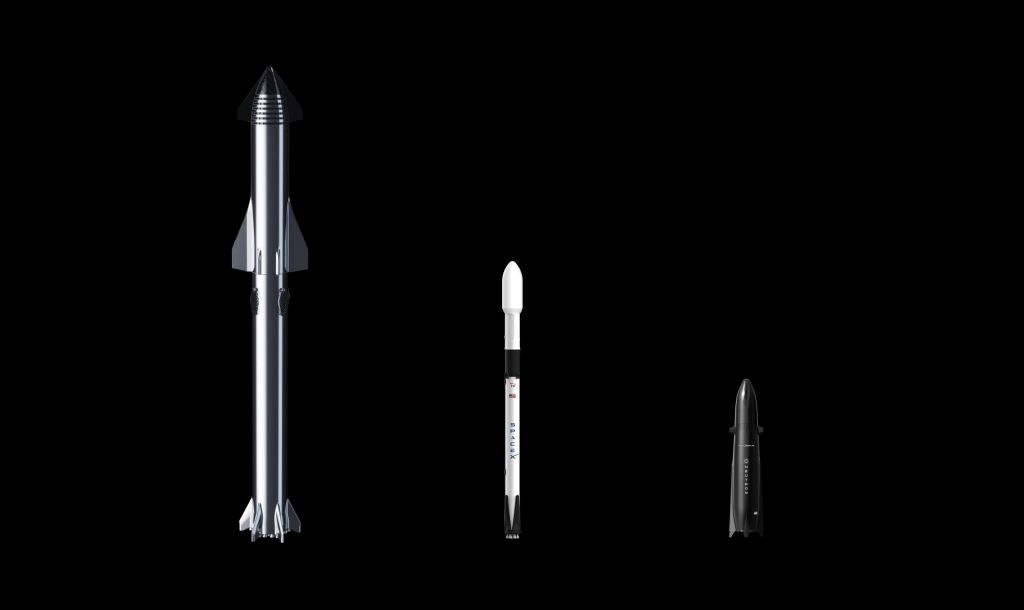
Unlike Electron, though, Neutron is being designed from the ground up for partial reusability. Powered by its reusable Archimedes engines, Rocket Lab believes the Neutron launch vehicle will be ideal for satellite constellation launches but also be sized right to support a range of other missions, including deep space exploration and, potentially, human spaceflight. In practice, even though Neutron’s design is substantially different, the rocket is effectively a half-scale Falcon 9 with some noteworthy modifications. Both are two-stage rockets with expendable upper stages and reusable boosters and fairings. With fairing and booster recovery, Falcon 9 is able to launch about 16 tons (~35,000 lb) to LEO – twice Neutron’s 8 tons.
Neutron stands at approximately 131 feet tall (39.9 meters) and between 5 and 7 meters (16-23 ft) wide – more than twice the height and 4-6 times the width of Electron. Because of its size and performance, Rocket Lab expects Neutron to be a strong competitor with other large launch providers, including SpaceX. As far as cost per launch, Beck has declined to provide an estimate beyond stating that “ it would be a pointless exercise [if Rocket Lab] didn’t think that it would be very cost-competitive with anything that’s currently in the market or being proposed.” Currently, the company’s Electron rocket is sold for about $7-8 million per launch. SpaceX, their largest prospective competitor, has sold Falcon 9s for as little as $50 million, while executives have indicated that the rocket costs the company just $28 million for a launch with a reused booster and fairing.
Rocket Lab has received strong support from the Commonwealth of Virginia and the Virginia Economic Development Partnership is working alongside Accomack County, the Virginia Commercial Space Flight Authority (Virginia Space), and the General Assembly’s Major Employment and Investment (MEI) Project Approval Commission to help expedite the process. That support is one of the primary reasons Rocket Lab selected Virginia of all places to build its first Neutron hub. According to Rocket Lab, as part of the Commonwealth’s proposal, “$30 million has been set aside for infrastructure and operational systems improvements to the Mid-Atlantic Regional Spaceport where the Neutron launch site will be located, along with $15 million from the MEI Project Approval Commission in site improvements and building construction in support of Neutron.”
Shaun D’Mello, the company’s Vice President stated, “We’ve enjoyed a solid partnership with Virginia for years that will no doubt be strengthened with Neutron. We have a shared mission to develop Rocket Lab’s presence at the Mid-Atlantic Regional Spaceport into a strategic national asset that provides responsive, reliable, reusable space launch through Neutron and Electron, and breaking ground on the site soon is a significant and impelling step toward that future.”
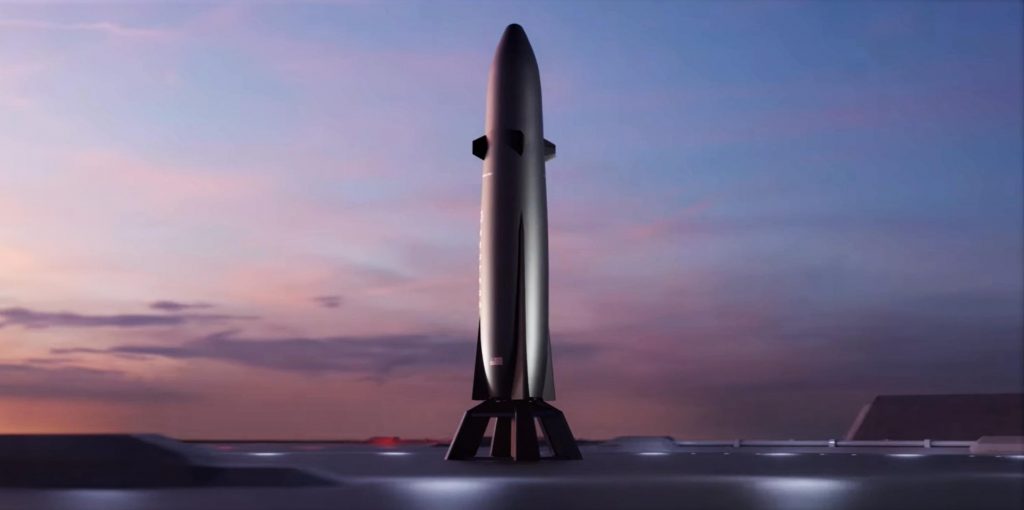
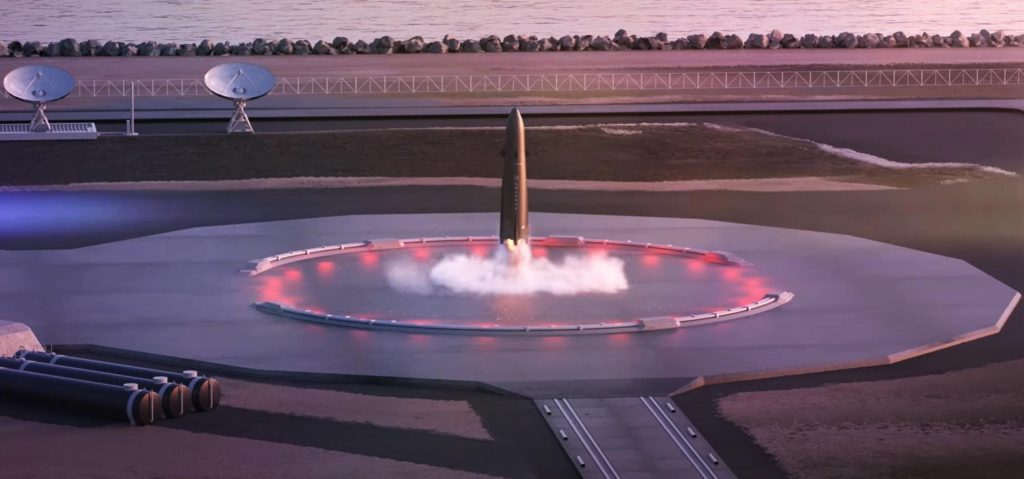
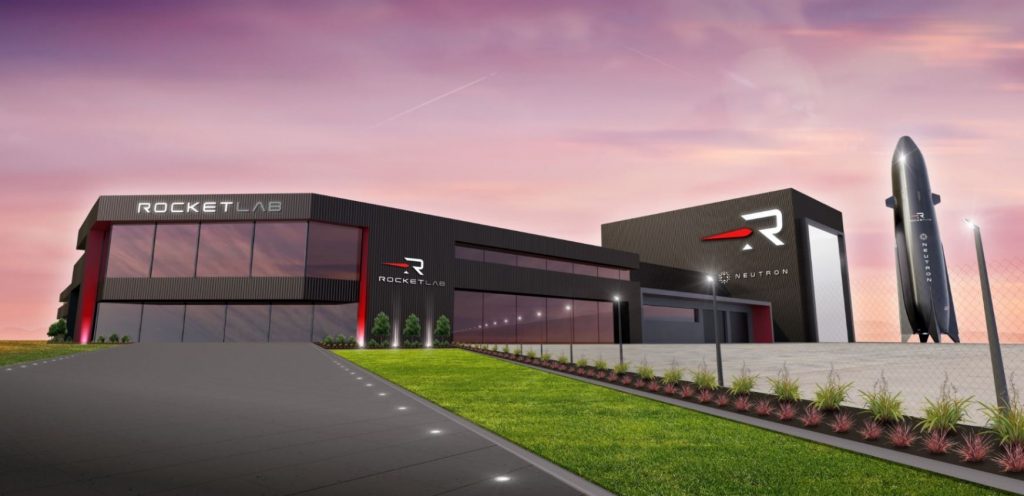
A public target has not been set for the completion of the factory and launch site but Rocket Lab states that they “expect to begin construction promptly.” Neutron, scheduled to launch as earlier as 2024, has already generated some degree of demand, and the United States Space Force recently decided to invest $24 million in its development.
Rocket Lab revealed the news of Neutron’s first factory and launch site comes on the same day as the first orbital launch from Launch Complex 1’s new Pad B. To learn more about Pad B and Rocket Lab’s existing Electron launch facilities, click here.

News
Tesla Model Y is still China’s best-selling premium EV through October
The premium-priced SUV outpaced rivals despite a competitive field, while the Model 3 also secured an impressive position.

The Tesla Model Y led China’s top-selling pure electric vehicles in the 200,000–300,000 RMB segment through October 2025, as per Yiche data compiled from China Passenger Car Association (CPCA) figures.
The premium-priced SUV outpaced rivals despite a competitive field, while the Model 3 also secured an impressive position.
The Model Y is still unrivaled
The Model Y’s dominance shines in Yiche’s October report, topping the chart for vehicles priced between 200,000 and 300,000 RMB. With 312,331 units retailed from January through October, the all-electric crossover was China’s best-selling EV in the 200,000–300,000 RMB segment.
The Xiaomi SU7 is a strong challenger at No. 2 with 234,521 units, followed by the Tesla Model 3, which achieved 146,379 retail sales through October. The Model Y’s potentially biggest rival, the Xiaomi YU7, is currently at No. 4 with 80,855 retail units sold.
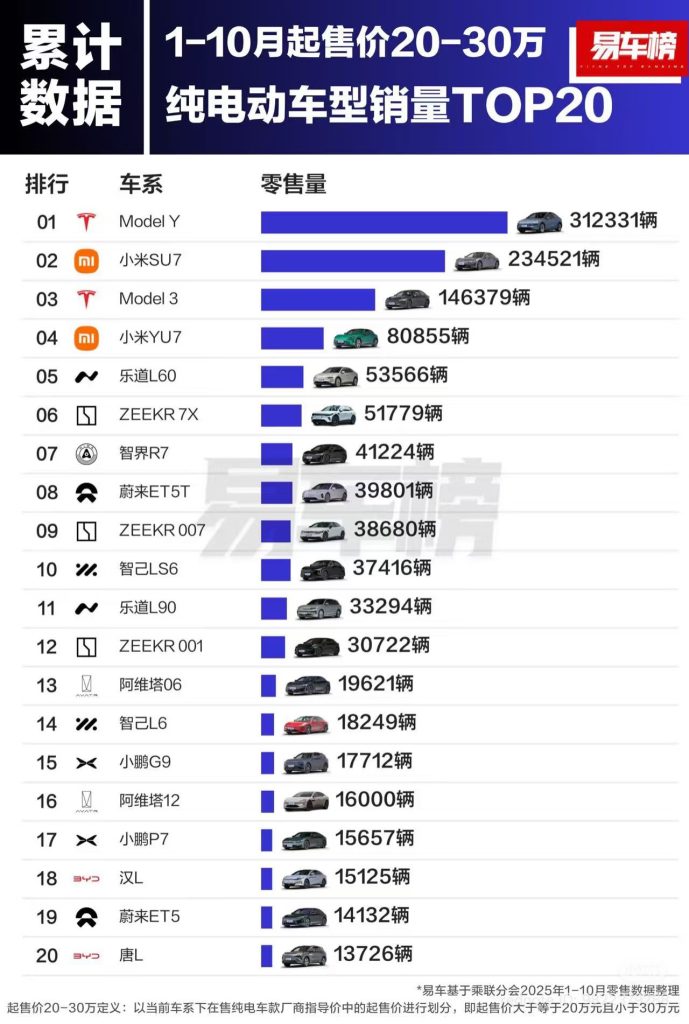
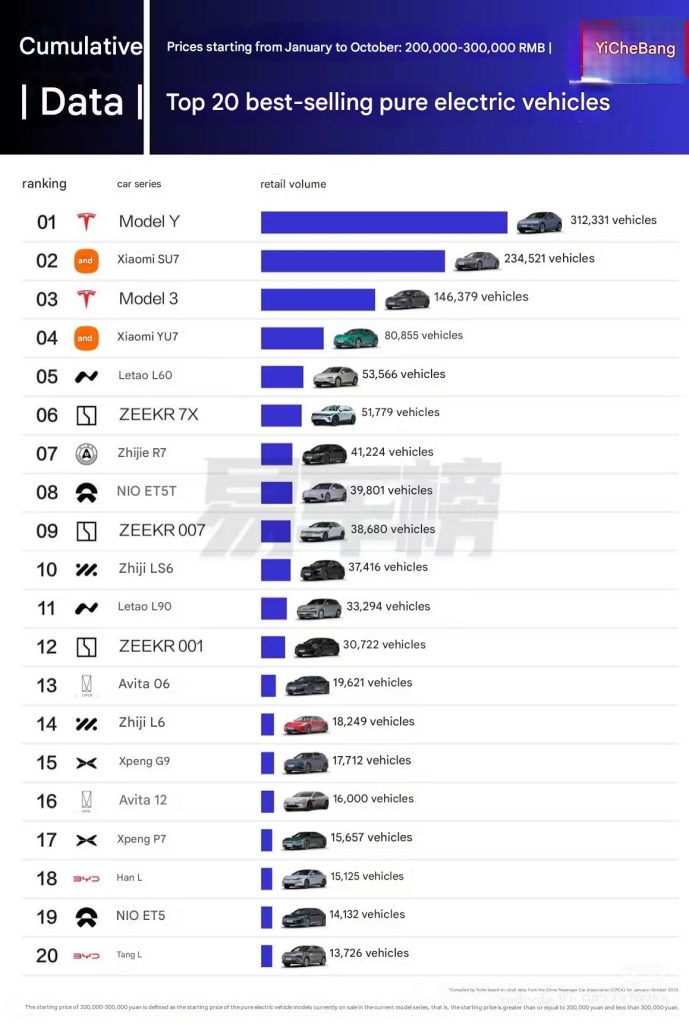
Efficiency kings
The Model 3 and Model Y recently claimed the top two spots in Autohome’s latest real-world energy-consumption test, outperforming a broad field of Chinese-market EVs under identical 120 km/h cruising conditions with 375 kg payload and fixed 24 °C cabin temperature. The Model 3 achieved 20.8 kWh/100 km while the Model Y recorded 21.8 kWh/100 km, reaffirming Tesla’s efficiency lead.
The results drew immediate attention from Xiaomi CEO Lei Jun, who publicly recognized Tesla’s advantage while pledging continued refinement for his brand’s lineup.
“The Xiaomi SU7’s energy consumption performance is also very good; you can take a closer look. The fact that its test results are weaker than Tesla’s is partly due to objective reasons: the Xiaomi SU7 is a C-segment car, larger and with higher specifications, making it heavier and naturally increasing energy consumption. Of course, we will continue to learn from Tesla and further optimize its energy consumption performance!” Lei Jun wrote in a post on Weibo.
Elon Musk
SpaceX’s Starship program is already bouncing back from Booster 18 fiasco
Just over a week since Booster 18 met its untimely end, SpaceX is now busy stacking Booster 19, and at a very rapid pace, too.
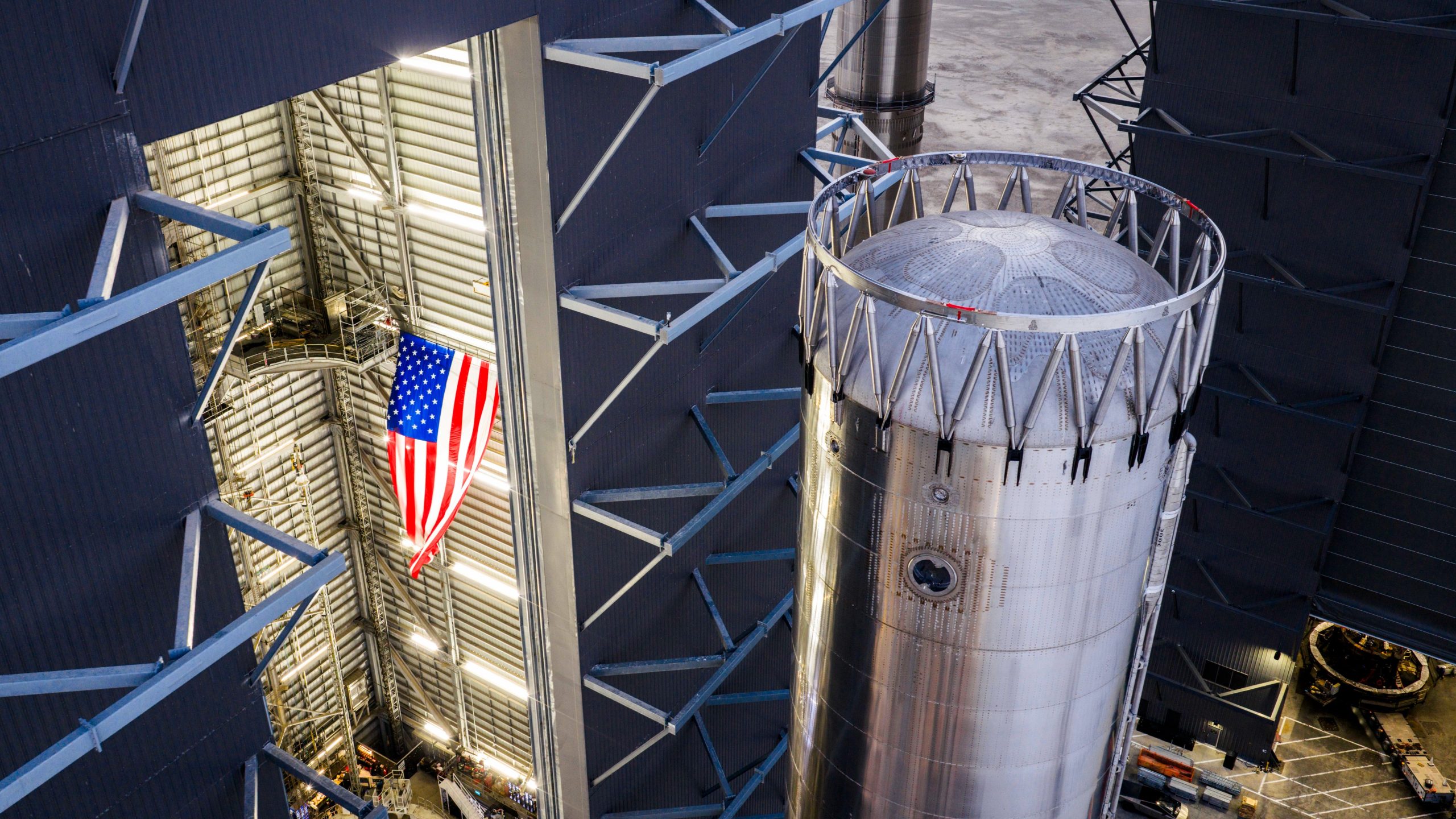
SpaceX is already bouncing back from the fiasco that it experienced during Starship Booster 18’s initial tests earlier this month.
Just over a week since Booster 18 met its untimely end, SpaceX is now busy stacking Booster 19, and at a very rapid pace, too.
Starship V3 Booster 19 is rising
As per Starbase watchers on X, SpaceX rolled out the fourth aft section of Booster 19 to Starbase’s MegaBay this weekend, stacking it to reach 15 rings tall with just a few sections remaining. This marks the fastest booster assembly to date at four sections in five days. This is quite impressive, and it bodes well for SpaceX’s Starship V3 program, which is expected to be a notable step up from the V2 program, which was retired after a flawless Flight 11.
Starship watcher TankWatchers noted the tempo on X, stating, “During the night the A4 section of Booster 19 rolled out to the MegaBay. With 4 sections in just 5 days, this is shaping up to be the fastest booster stack ever.” Fellow Starbase watcher TestFlight echoed the same sentiments. “Booster 19 is now 15 rings tall, with 3 aft sections remaining!” the space enthusiast wrote.
Aggressive targets despite Booster 18 fiasco
SpaceX’s V3 program encountered a speed bump earlier this month when Booster 18, just one day after rolling out into the factory, experienced a major anomaly during gas system pressure testing at SpaceX’s Massey facility in Starbase, Texas. While no propellant was loaded, no engines were installed, and no one was injured in the incident, the unexpected end of Booster 18 sparked speculation that the Starship V3 program could face delays.
Despite the Booster 18 fiasco, however, SpaceX announced that “Starship’s twelfth flight test remains targeted for the first quarter of 2026.” Elon Musk shared a similar timeline on X earlier this year, with the CEO stating that “ V3 is a massive upgrade from the current V2 and should be through production and testing by end of year, with heavy flight activity next year.”
Considering that Booster 19 seems to be moving through its production phases quickly, perhaps SpaceX’s Q1 2026 target for Flight 12 might indeed be more than feasible.
News
Elon Musk makes a key Tesla Optimus detail official
“Since we are naming the singular, we will also name the plural, so Optimi it is,” Musk wrote on X.
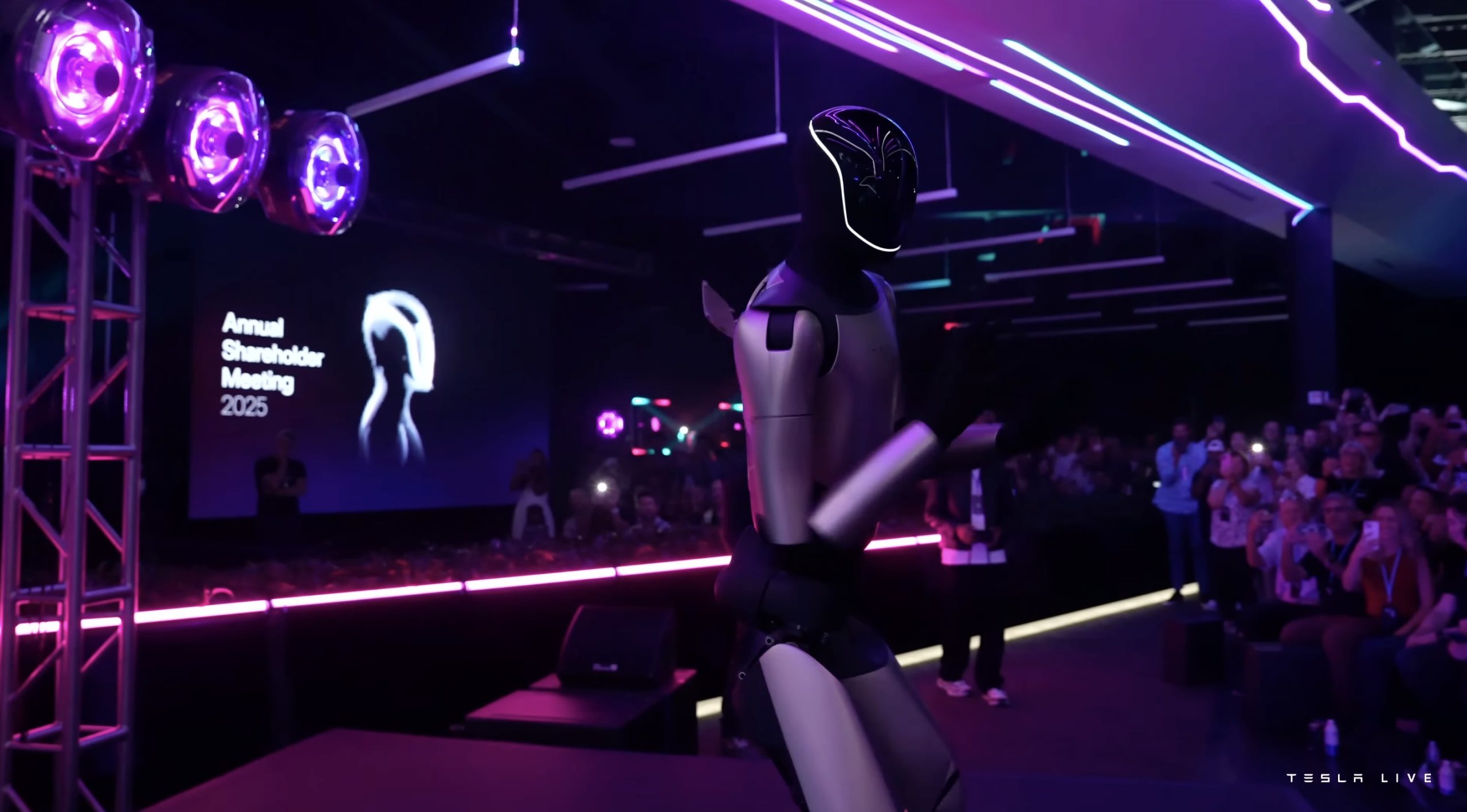
Tesla CEO Elon Musk just made a key detail about Optimus official. In a post on X, the CEO clarified some key wording about Optimus, which should help the media and the public become more familiar with the humanoid robot.
Elon Musk makes Optimus’ plural term official
Elon Musk posted a number of Optimus-related posts on X this weekend. On Saturday, he stated that Optimus would be the Von Neumann probe, a machine that could eventually be capable of replicating itself. This capability, it seems, would be the key to Tesla achieving Elon Musk’s ambitious Optimus production targets.
Amidst the conversations about Optimus on X, a user of the social media platform asked the CEO what the plural term for the humanoid robot will be. As per Musk, Tesla will be setting the plural term for Optimus since the company also decided on the robot’s singular term. “Since we are naming the singular, we will also name the plural, so Optimi it is,” Musk wrote in his reply on X.
This makes it official. For media outlets such as Teslarati, numerous Optimus bots are now called Optimi. It rolls off the tongue pretty well, too.
Optimi will be a common sight worldwide
While Musk’s comment may seem pretty mundane to some, it is actually very important. Optimus is intended to be Tesla’s highest volume product, with the CEO estimating that the humanoid robot could eventually see annual production rates in the hundreds of millions, perhaps even more. Since Optimi will be a very common sight worldwide, it is good that people can now get used to terms describing the humanoid robot.
During the Tesla 2025 Annual Shareholder Meeting, Musk stated that the humanoid robot will see “the fastest production ramp of any product of any large complex manufactured product ever,” starting with a one-million-Optimi-per-year production line at the Fremont Factory. Giga Texas would get an even bigger Optimus production line, which should be capable of producing tens of millions of Optimi per year.









